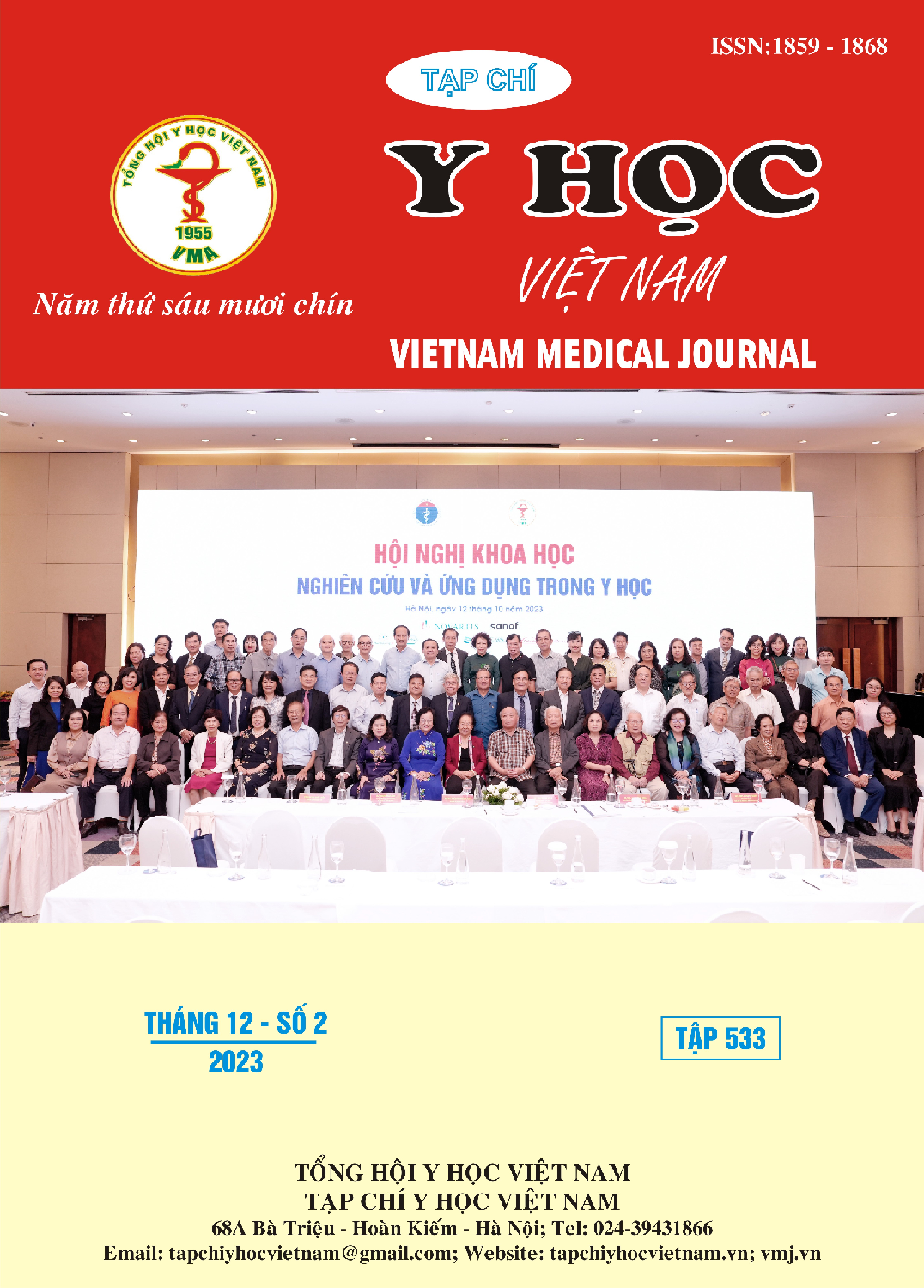THỰC TRẠNG KHÔNG ĐÁP ỨNG VỚI THUỐC INFLIXIMAB VÀ MỘT SỐ YẾU TỐ LIÊN QUAN TRONG ĐIỀU TRỊ VIÊM CỘT SỐNG DÍNH KHỚP
Nội dung chính của bài viết
Tóm tắt
Mục tiêu: 1. Xác định tỷ lệ không đáp ứng với thuốc infliximab trong điều trị viêm cột sống dính khớp. 2. Khảo sát một số yếu tố liên quan đến tình trạng không đáp ứng với infliximab ở bệnh nhân viêm cột sống dính khớp. Đối tượng và phương pháp nghiên cứu: Nghiên cứu tiến cứu trên 74 bệnh nhân được chẩn đoán viêm cột sống dính khớp theo tiêu chuẩn New York sửa đổi (1984) và có chỉ định điều trị bằng thuốc infliximab theo tiêu chuẩn ASAS/EULAR 2016 tại Trung tâm Cơ Xương Khớp, Bệnh viện Bạch Mai từ tháng 8/2018 đến tháng 8/2022. Kết quả: Tỷ lệ bệnh nhân không đáp ứng với thuốc infliximab: 41,9%, trong đó tỷ lệ không đáp ứng nguyên phát: 6,8% và không đáp ứng thứ phát: 35,1%. Nhóm bệnh nhân không đáp ứng thứ phát với infliximab có tỷ lệ không tuân thủ điều trị: 65,4%, cao hơn rất nhiều so với nhóm bệnh nhân có đáp ứng với thuốc: 37,2%, sự khác biệt có ý nghĩa thống kê (p < 0,05). Kết luận: Không đáp ứng với infliximab trong điều trị viêm cột sống dính khớp: 41,9%, chủ yếu là không đáp ứng thứ phát. Nhóm bệnh nhân không đáp ứng với infliximab có tỷ lệ không tuân thủ điều trị cao hơn rõ rệt so với nhóm bệnh nhân có đáp ứng với infliximab.
Chi tiết bài viết
Tài liệu tham khảo
2. Ward MM, Deodhar A, Gensler LS, et al. 2019 Update of the American College of Rheumatology/Spondylitis Association of America/Spondyloarthritis Research and Treatment Network Recommendations for the Treatment of Ankylosing Spondylitis and Nonradiographic Axial Spondyloarthritis. Arthritis Care Res. 2019;71(10):1285-1299. doi:10.1002/ acr.24025
3. Liu W, Wu Y hao, Zhang L, et al. Efficacy and safety of TNF-α inhibitors for active ankylosing spondylitis patients: Multiple treatment comparisons in a network meta-analysis. Sci Rep. 2016;6:32768. doi:10.1038/srep32768
4. Deodhar A, Yu D. Switching tumor necrosis factor inhibitors in the treatment of axial spondyloarthritis. Semin Arthritis Rheum. 2017;47(3): 343-350. doi: 10.1016 /j.semarthrit. 2017.04.005
5. Alazmi M, Sari I, Krishnan B, Inman RD, Haroon N. Profiling Response to Tumor Necrosis Factor Inhibitor Treatment in Axial Spondyloarthritis. Arthritis Care Res. 2018;70(9):1393-1399. doi:10.1002/acr.23465
6. Wang R, Dasgupta A, Ward MM. Predicting Probability of Response to Tumor Necrosis Factor Inhibitors for Individual Patients With Ankylosing Spondylitis. JAMA Netw Open. 2022;5(3): e222312. doi:10.1001/ jamanetworkopen. 2022.2312
7. Lindström U, Olofsson T, Wedrén S, Qirjazo I, Askling J. Biological treatment of ankylosingspondylitis: a nationwide study of treatment trajectories on a patient level in clinical practice. Arthritis Res Ther. 2019;21(1):128. doi:10.1186/ s13075-019-1908-9
8. Plasencia C, Pascual-Salcedo D, Nuño L, et al. Influence of immunogenicity on the efficacy of longterm treatment of spondyloarthritis with infliximab. Ann Rheum Dis. 2012;71(12):1955-1960. doi: 10.1136/annrheumdis-2011-200828


